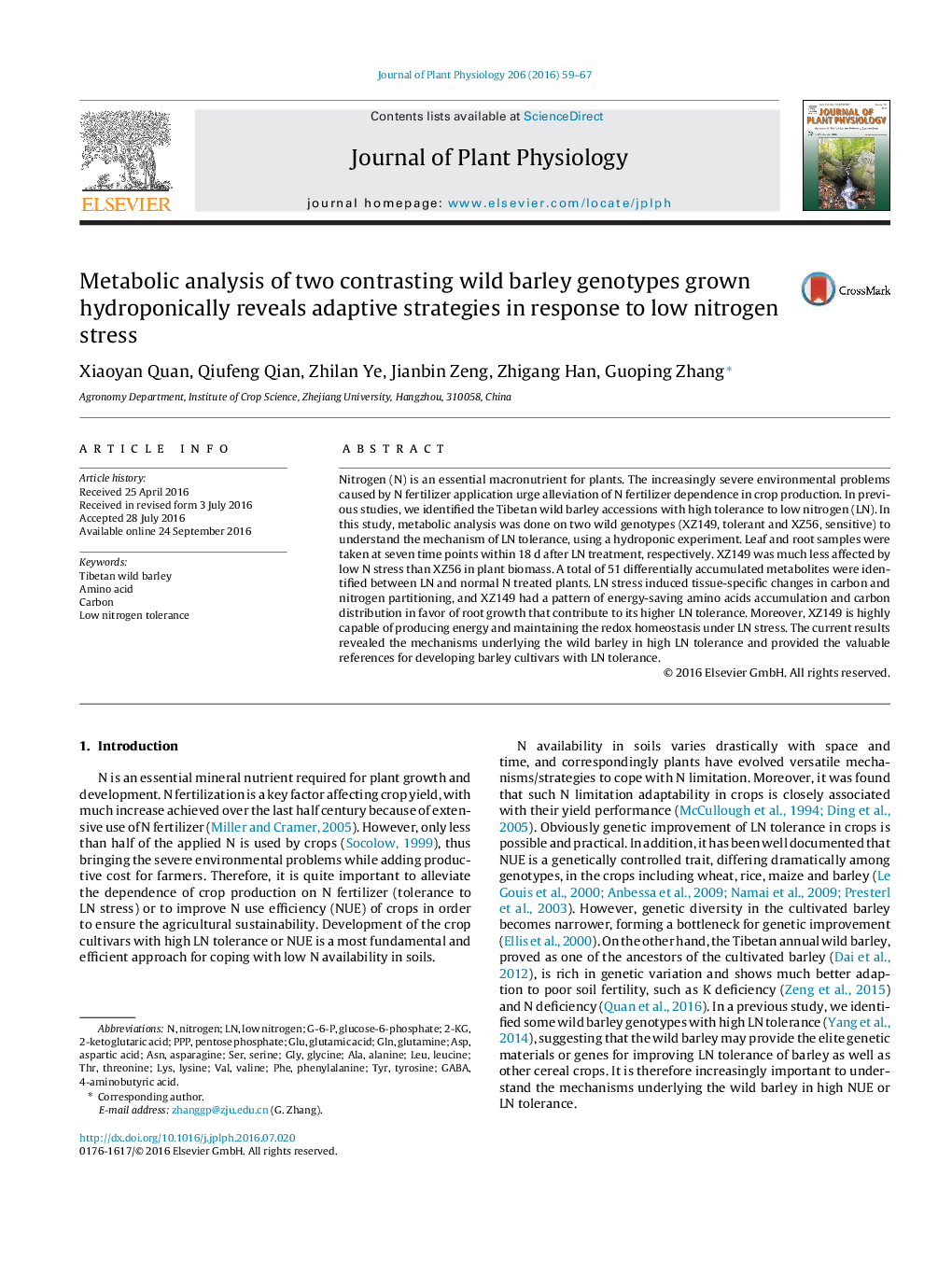| Article ID | Journal | Published Year | Pages | File Type |
|---|---|---|---|---|
| 5518163 | Journal of Plant Physiology | 2016 | 9 Pages |
Nitrogen (N) is an essential macronutrient for plants. The increasingly severe environmental problems caused by N fertilizer application urge alleviation of N fertilizer dependence in crop production. In previous studies, we identified the Tibetan wild barley accessions with high tolerance to low nitrogen (LN). In this study, metabolic analysis was done on two wild genotypes (XZ149, tolerant and XZ56, sensitive) to understand the mechanism of LN tolerance, using a hydroponic experiment. Leaf and root samples were taken at seven time points within 18 d after LN treatment, respectively. XZ149 was much less affected by low N stress than XZ56 in plant biomass. A total of 51 differentially accumulated metabolites were identified between LN and normal N treated plants. LN stress induced tissue-specific changes in carbon and nitrogen partitioning, and XZ149 had a pattern of energy-saving amino acids accumulation and carbon distribution in favor of root growth that contribute to its higher LN tolerance. Moreover, XZ149 is highly capable of producing energy and maintaining the redox homeostasis under LN stress. The current results revealed the mechanisms underlying the wild barley in high LN tolerance and provided the valuable references for developing barley cultivars with LN tolerance.
